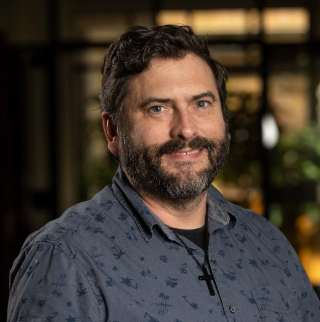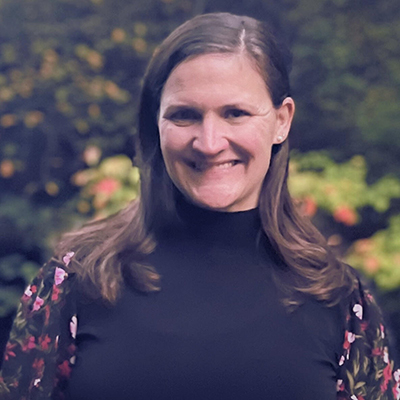It’s just one project after another, and in the case of Shayna Garlisi’s 2nd grade classroom this is good news. For the past three years, Shayna has found innovative and engaging ways to integrate technology for her young students. From producing their own weather reports to programming robots, these young innovators know no bounds in their creative pursuits. “Littleton is a technology-forward district,” said Garlisi, who is quick to add how collaborative her colleagues are in sharing ideas.
Going Green
 One such idea was green screen video production using iPads and the Doink app. “Weather storms are a unit of study in my class where students learn about different types of storms and the impact of weather on people and animals,” she said. Garlisi guides her students through the research process, followed by script writing about their newly-gained knowledge. “They start with book research using the classroom library and do a lot together,” states Garlisi, who discusses how to pull facts from a book without copying information. This is followed by ‘controlled’ online research using subscription databases and vetted website links. The students then take on the role of weather reporters either in the ‘studio’ or out in the ‘field’. The magic in this lesson takes place in the Imagitorium, the school’s maker space. Video recording is done in front of a green wall. Students then place themselves into ‘scenes’ using images and videos from a shared Google Drive. The students share safety tips for finding shelter and keeping safe based on their research. Shayna shows her students how to use the app, then they produce the final videos on their own. Their reports were even aired on the local cable station, giving the students an audience so beyond the classroom. “The project is a great connection to their literacy work,” states Garlisi.
One such idea was green screen video production using iPads and the Doink app. “Weather storms are a unit of study in my class where students learn about different types of storms and the impact of weather on people and animals,” she said. Garlisi guides her students through the research process, followed by script writing about their newly-gained knowledge. “They start with book research using the classroom library and do a lot together,” states Garlisi, who discusses how to pull facts from a book without copying information. This is followed by ‘controlled’ online research using subscription databases and vetted website links. The students then take on the role of weather reporters either in the ‘studio’ or out in the ‘field’. The magic in this lesson takes place in the Imagitorium, the school’s maker space. Video recording is done in front of a green wall. Students then place themselves into ‘scenes’ using images and videos from a shared Google Drive. The students share safety tips for finding shelter and keeping safe based on their research. Shayna shows her students how to use the app, then they produce the final videos on their own. Their reports were even aired on the local cable station, giving the students an audience so beyond the classroom. “The project is a great connection to their literacy work,” states Garlisi.
Kids Who Code
 Shayna’s students have also been polishing up their coding skills using Ozobots. New last year to Littleton, these small robots involve coding and computing skills. “The students program them to do different things using either the iPad app or by drawing with colored markers on paper. The Ozobots then move, light up, and flash based on colors on paper.” Students are challenged with different levels of coding and even used OzoGroove to program the Ozobots to dance. It was not long before Garlisi’s students had explored all of the challenges that came with the Ozobots, so they started to create their own. Their innovative spirit coupled with Garlisi’s teaching style led to student-created games using the Ozobots. In this endeavor, the students designed their games by sketching concepts and writing their own instructions and rules of play. Some used the Ozobot as a spinner, while others used it as a gameboard. Examples of the student-created games include a fitness game where players do exercises based on the game board square the Ozobot lands on. Push ups, anyone? Another game is math game with number equations along the board for players to solve and keep track using mental math.
Shayna’s students have also been polishing up their coding skills using Ozobots. New last year to Littleton, these small robots involve coding and computing skills. “The students program them to do different things using either the iPad app or by drawing with colored markers on paper. The Ozobots then move, light up, and flash based on colors on paper.” Students are challenged with different levels of coding and even used OzoGroove to program the Ozobots to dance. It was not long before Garlisi’s students had explored all of the challenges that came with the Ozobots, so they started to create their own. Their innovative spirit coupled with Garlisi’s teaching style led to student-created games using the Ozobots. In this endeavor, the students designed their games by sketching concepts and writing their own instructions and rules of play. Some used the Ozobot as a spinner, while others used it as a gameboard. Examples of the student-created games include a fitness game where players do exercises based on the game board square the Ozobot lands on. Push ups, anyone? Another game is math game with number equations along the board for players to solve and keep track using mental math.
Garlisi’s students also designed game packaging, complete with their own logo and advertisement to entice others  to use the game. She finds her students to be deeply engaged when using technology. “Overall, their brain development has changed. Everything is quick for them.” She continues, “They are not on the same image for more than a couple of seconds, and their attention span is shorter. Technology is exciting for them!” While her students may view technology as a game, there is indeed a lot of learning involved. In addition to content, Shayna wants her students to develop technology skills. “The more they can get excited, the more engaged they are and enjoy creating on their own,” she said. A big piece of this is Garlisi’s willingness to give her students choices in demonstrating their understanding. In their passion project, her students have a researchable question and may choose how to create their project. “Some may present in slides, some may make a poster, and others a video,” she said. “Anything they can create on their own, increases their ownership of their learning.”
to use the game. She finds her students to be deeply engaged when using technology. “Overall, their brain development has changed. Everything is quick for them.” She continues, “They are not on the same image for more than a couple of seconds, and their attention span is shorter. Technology is exciting for them!” While her students may view technology as a game, there is indeed a lot of learning involved. In addition to content, Shayna wants her students to develop technology skills. “The more they can get excited, the more engaged they are and enjoy creating on their own,” she said. A big piece of this is Garlisi’s willingness to give her students choices in demonstrating their understanding. In their passion project, her students have a researchable question and may choose how to create their project. “Some may present in slides, some may make a poster, and others a video,” she said. “Anything they can create on their own, increases their ownership of their learning.”
Collaboration to Continuously Improve
On a professional level, Shayna keeps up with education through Twitter and her PLN. When she was new to Twitter, she would find articles and share them. This soon evolved into sharing book titles. This eventually led to the co-founding of a virtual book club using Flipgrid. A voluntary endeavor, Shayna and colleague Katharine Dale, created a reading timeline for sections of books with weekly discussion questions. This helped to build camaraderie across the district. When the club read ‘Balance Like A Pirate’, Shayna reached out to the author on Twitter, and she joined the grid! “So much of what I do I find on Twitter,” she said.
Garlisi’s greatest accomplishment is the opportunity to teach every day. “For a long time, I didn’t have my own classroom and having this opportunity has been great! I love seeing the students’ faces when they get it!”
MassCUE would like to congratulate Shayna for a job well-done!
Shayna Garlisi teaches 2nd grade for Littleton Public Schools and ballet, tap, jazz, and contemporary dance at West Concord Dance Academy. She focuses her teaching and classroom culture on building relationships with students and sparking their enthusiasm for learning using a growth mindset. She shares this positive culture with her colleagues at Shaker Lane School through working on many collaborative committees and leading all school community meetings. Shayna has presented at MassCUE’s Fall Conference and Spring Leadership Conference. Her students have been featured in local newspaper articles and news broadcasts for their community outreach and service projects. When she isn’t teaching, Shayna spends her time skiing, sailing, reading, traveling, and cheering for the New England Patriots. Shayna is a tech enthusiast and considers herself a life-long learner.
Follow her on Twitter @msgarlisi204
 Print this post
Print this post



